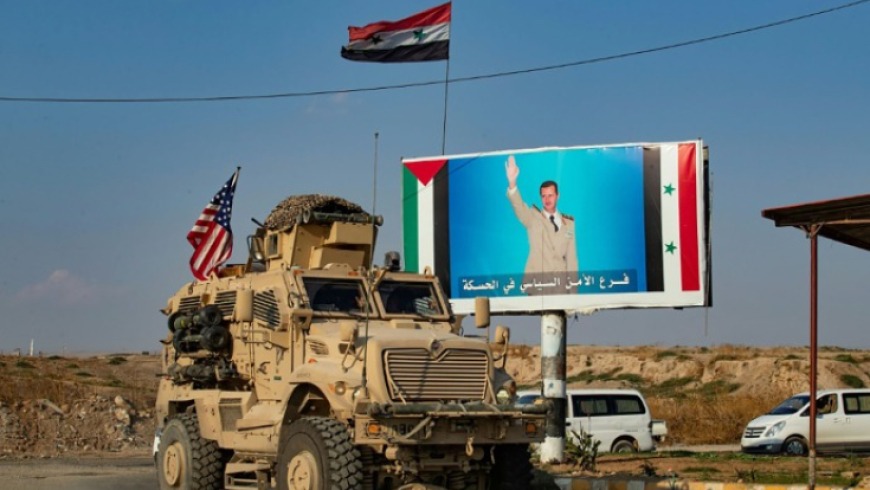Syria’s Foreign Minister, Faisal al-Mekdad, has taken a strong stance against the United States, calling for the withdrawal of American troops from Syrian territory. During a joint press conference with his Iranian counterpart, Hussein Amir Abdollahian, Mekdad emphasized that it is preferable for the American army to leave Syria voluntarily rather than face the consequences of a forced withdrawal. He also made a reference to the resilience and historical determination of the Syrian people to overcome aggressors throughout their nation’s history.
This recent escalation by the Syrian regime and its allies comes amidst rising tensions in the region, with Russia expressing readiness for various scenarios in Syria. While Russia stated its reluctance to engage in a military clash with the United States, it responded to questions regarding “American provocations” in Syria.
One significant incident that fueled the escalation was the interception of American reconnaissance planes by Russian warplanes over Syrian airspace in July. On one occasion, a Russian aircraft dropped a light bomb on an American “Reaper-MQ9” drone.
The conflict in eastern Syria, particularly around the Euphrates River, has sparked different agendas and outcomes, contributing to the growing tensions between the Syrian regime and its allies, and American forces.
The situation remains complex and delicate, with various geopolitical factors at play, leading to heightened hostilities and increased military actions by both sides in the region.
According to a private source cited by the Syria TV website, there was a joint meeting between the Syrian regime, representatives of the Iranian Revolutionary Guards, and the Russian Hmeimim base at the end of the previous month.
The purpose of the meeting was to discuss several key issues, including the threats posed by US forces on Syrian territory and the interests of both Tehran and Moscow.
One significant concern discussed was the introduction of new US weapons to military bases in northeastern Syria. Additionally, there were talks about a potential military move against Iranian influence in the region, indicating rising tensions between the involved parties.
The source also mentioned that Iran has been actively working to establish a popular resistance among tribesmen in northeastern Syria. This resistance is intended to exert pressure on the American forces with the ultimate goal of pushing them to withdraw from Syria.
Furthermore, in mid-July, the Syrian regime sent military reinforcements from the Damascus countryside to the Al-Mayadin area in the Deir-ez-Zor countryside. This move coincided with military training conducted by the International Coalition Forces in Al-Hassakeh Governorate. Moreover, Iranian militias deployed in the Al-Bukamal area were observed repositioning their forces and constructing new fortifications.
A high-ranking security source expressed the concern of the Syrian regime and its supporters about the presence of American forces on Syrian territories. The primary reason for this concern is their apprehension regarding suspicious American activities in relation to both Damascus and Tehran.
Overall, the situation indicates a complex web of geopolitical interests and military movements, with various actors vying for influence and control in the region, leading to heightened tensions and potential security risks.
The informed source has disclosed several developments regarding the international coalition forces’ efforts to counter Iranian influence in Syria. According to the source, discussions were held with the al-Sanadid forces to plan a military operation targeting Iranian militias on the Syrian-Iraqi border. Furthermore, an offer was extended to the former commander of the Raqqa Revolutionaries Brigade, Abu Issa al-Tabaqa, to provide support in exchange for his cooperation in efforts to reduce Iranian influence.
The recent shift towards relying on Arab tribal forces by the United States came as a result of their conviction that the Syrian Democratic Forces (SDF) could not effectively confront Iranian influence due to their complex relationship with the Syrian regime and its supporters.
However, despite the escalating tensions between the US and the Syrian regime, with Iran and Russia playing significant roles, the source suggests that the possibility of direct confrontations remains uncertain.
There are still opportunities for understanding between Washington and Tehran, especially as they engage in talks from time to time with Omani mediation to discuss the potential return to the nuclear agreement. If an agreement is reached, it is unlikely that a trend toward escalation in Syria will take place.
These developments illustrate the complex dynamics and uncertainties surrounding the Syrian conflict, with various parties pursuing their interests and seeking ways to influence the situation on the ground.
This article was translated and edited by The Syrian Observer. The Syrian Observer has not verified the content of this story. Responsibility for the information and views set out in this article lies entirely with the author.


